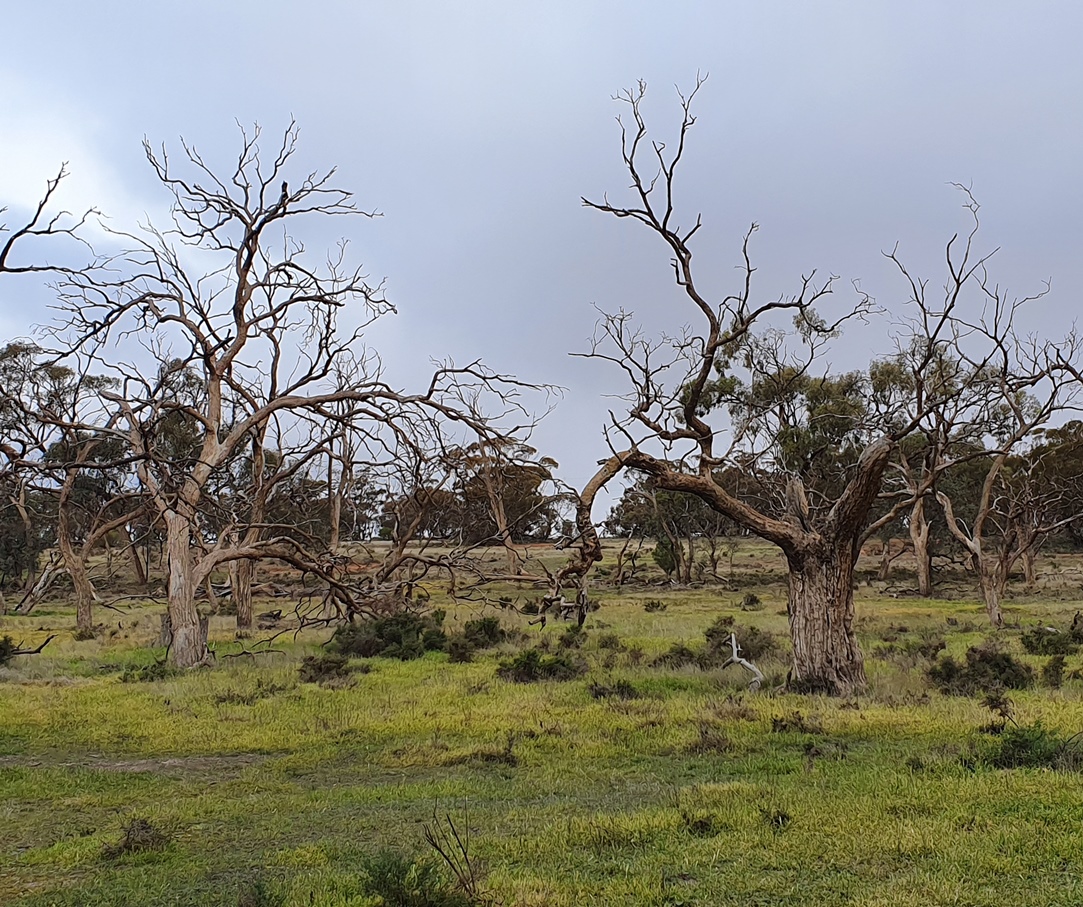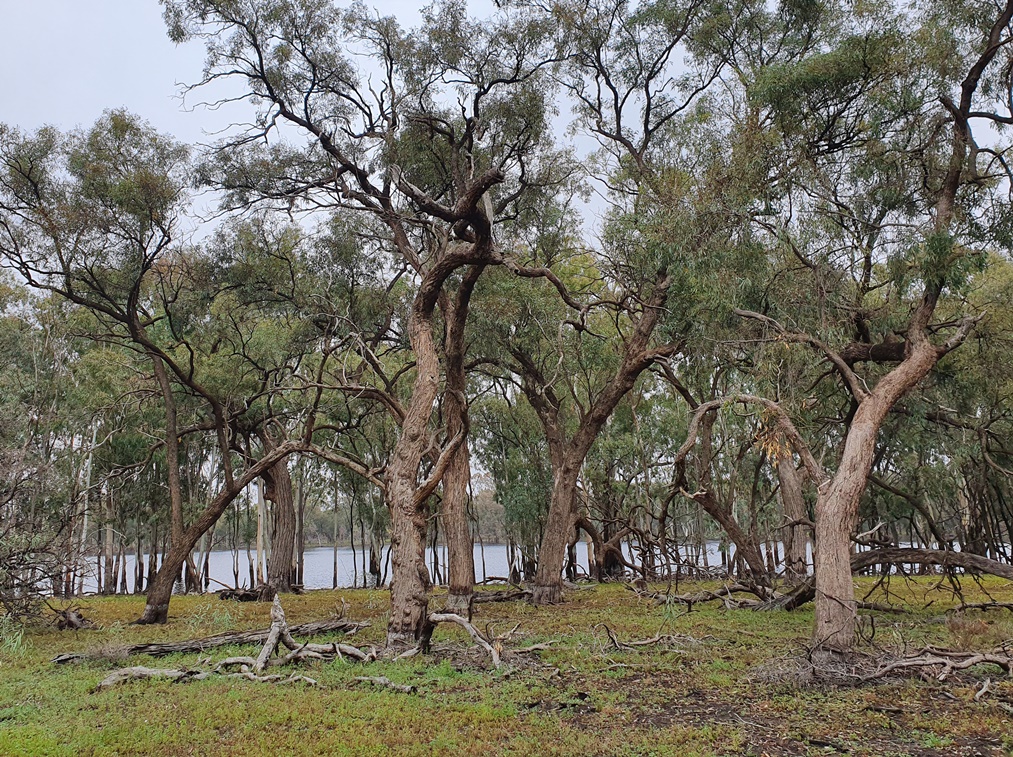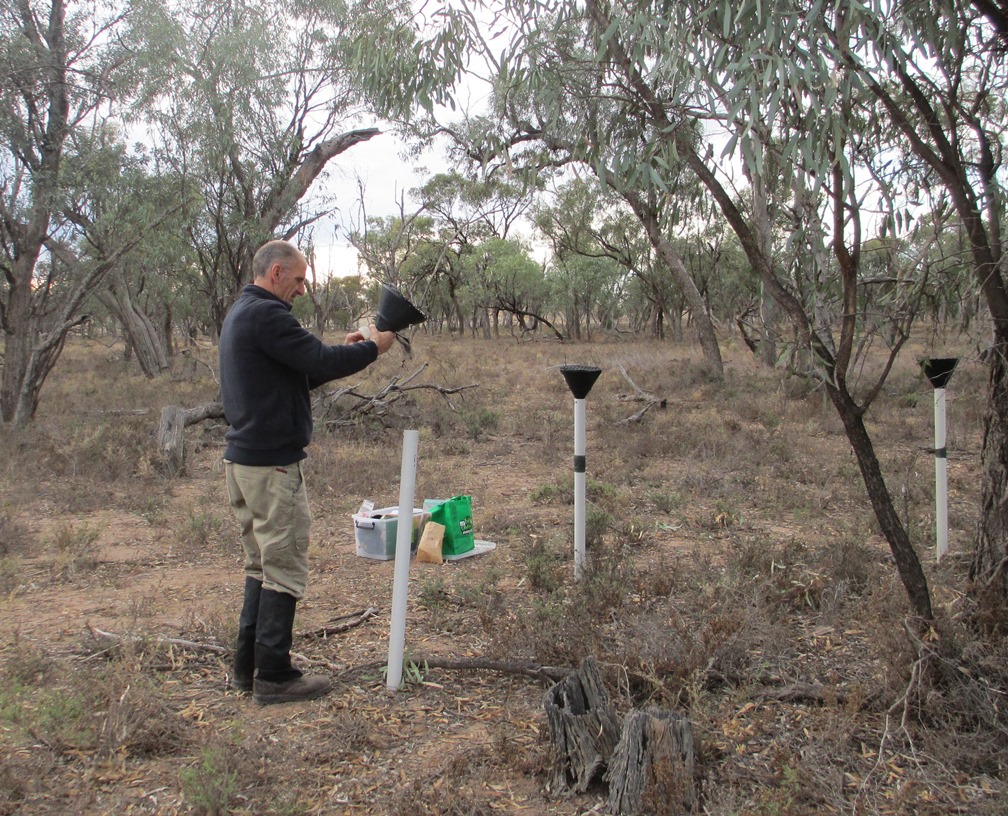Black Box woodlands are an important component of the Murray-Darling Basin. Black Box (Eucalyptus largiflorens) trees rely on regular flooding to maintain health and promote regeneration, as well as providing food and shelter for wildlife. Since European settlement, there have been significant changes to the natural flooding regime (frequency, duration, and extent) in Black Box woodlands, and as a result the health of many of these communities are in decline.
Environmental watering (managed flooding for the environment) is being used to maintain and improve the health of Black Box woodlands in north-west Victoria. However, there are gaps in what is known about how environmental water influences different aspects of Black Box woodlands such as tree health, reproduction (density of flowers and fruits), regeneration, recruitment, and population structure. This information is important to determine the success of environmental watering, refine future environmental water deliveries and other restoration activities.
Through a coordinated suite of projects, ARI scientists have been monitoring changes in Black Box woodlands in response to environmental watering and other restoration actions (e.g. stock exclusion fencing) for several years. Various aspects of Black Box ecology are being explored, with some research already providing new knowledge that is being applied to improve their management. Other studies are continuing and will inform management actions as results become available.
Current findings:
- Along the Murray River floodplains Black Box woodlands that are not regularly flooded are in poor condition (e.g. reduced canopy cover and limited reproduction, seed fall and recruitment).
- Environmental watering led to sustained improvements over a seven-year period in Black Box reproductive output, seed fall and overall tree health at Hattah Lakes.·


- Seed viability and germination rates in the laboratory were high whether they were from environmental watering sites or not. But seedling survival rates remain unknown.
- Three large environmental watering events over a seven-year period have maintained the water dependant understorey vegetation of Black Box woodlands at Hattah Lakes.
- Recently flooded (in the last five years) Black Box Woodlands were in better health with a higher reproductive output, than those without recent flooding at Lake Walla Walla, Lindsay and Mulcra Islands
This research program is improving our knowledge on Black Box woodland condition and the role of environmental watering across Victorian populations. This work is contributing to evaluating and refining environmental water management to maintain healthy Black Box populations. Various funding sources have contributed to this work including DELWP, Murray-Darling Basin Authority, Mallee CMA and Parks Victoria.
For more information contact: claire.moxham@delwp.vic.gov.au
The journal articles and fact sheets below details some results from this work:
- Moxham, C., Kenny, S. A., and Fanson, B. (2024) Environmental flows and microsite attributes influence floodplain eucalypt recruitment. Forest Ecology and Management 572: 122330
- Moxham, C., and Kenny, S. A. (2024) Browsing impacts on seedling survival of Black Box (Eucalyptus largiflorens). Ecological Management and Restoration 25: 32-36
- Investigating Black Box Regeneration fact sheet - browsing has a high impact on Black Box seedling survival (PDF, 556.2 KB)
(accessible version (DOCX, 2.3 MB)) - Moxham, C., Duncan, M. and Moloney, P. (2018) Tree health and regeneration response of Black Box (Eucalyptus largiflorens) to recent flooding. Ecological Management and Restoration 19: 58–65
- Environmental Water Benefits Black Box fact sheet - Hattah Lakes - individual tree health, flowering and seed production (PDF, 739.0 KB)
(accessible version (DOCX, 2.5 MB)) - Environmental Water Benefits Black Box fact sheet - Hattah Lakes - recruitment and population structure (PDF, 359.0 KB)
(accessible version (DOCX, 1.3 MB))
Page last updated: 03/12/25
